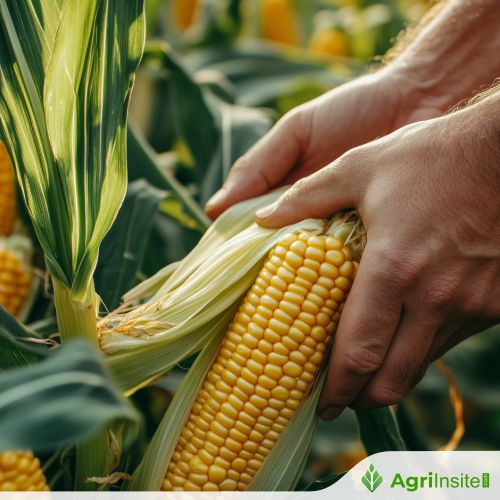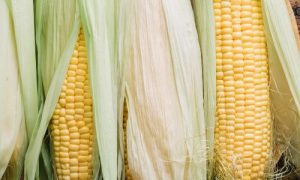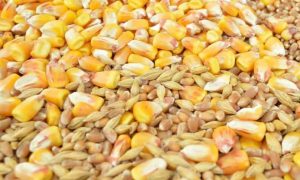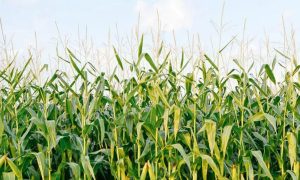AI Tool Makes “Invisible Enemy” Visible, Tackling Aflatoxin Risk in Africa’s Maize

An AI-powered Aflatoxin Early Warning System (A-EWS) predicts maize contamination hotspots in East Africa using satellite and historical data. Developed by IITA and partners, it classifies risk levels, guides targeted interventions, and aids policymakers, traders, and farmers. The system enhances food safety, protects public health, and supports grain trade across the region.
An innovative early warning system powered by artificial intelligence is poised to transform how Africa confronts a silent but deadly threat to its food supply: aflatoxin contamination in maize. The Aflatoxin risk Early Warning System (A-EWS) uses machine learning and satellite data to predict and map contamination hotspots, offering a powerful new weapon in the fight for food safety. The tool was developed by the International Institute of Tropical Agriculture (IITA) and its partners, through the CGIAR Scaling for Impact Program (S4I) and the CGIAR Sustainable Farming Program (SFP).
The tool will be a highlight at the upcoming 11th African Grain Trade Summit in Zanzibar, a premier conference that brings together policymakers and leaders from the grain industry.
Aflatoxin, a potent mycotoxin produced by the Aspergillus flavus fungus, is an “invisible enemy” hidden in soils. It contaminates staple crops including maize, groundnuts, and sorghum, causing severe health problems such as stunted growth in children, immune system suppression, and liver cancer. Economically, aflatoxin contamination costs Africa an estimated $670 million annually in lost grain trade.
“There is limited information on the spatial distribution of aflatoxin risk at the farm level, though it is of critical importance for guiding spatial targeting of appropriate management interventions,” explain the researchers behind the system.
Harnessing Data to Predict Risk
The A-EWS fills this information gap by applying geospatial artificial intelligence (GeoAI) to forecast pre-harvest contamination risk zones. The tool’s machine learning models were trained on a vast dataset that integrates:
- Historical Data: 907 unique pre-harvest maize samples from farms in Kenya, Uganda, Malawi, and Tanzania collected between 2009 and 2022.
- Environmental Variables: Satellite-derived data on temperature, precipitation, humidity, elevation, and soil properties—key factors influencing fungal growth.
The system classifies aflatoxin risk into three internationally recognized categories: low (<5 ppb), medium (5–20 ppb), and high (>20 ppb). Among eight machine learning algorithms tested, the Gradient Boosting Model (GBM) demonstrated the highest accuracy on new data, achieving F1-scores of 67% for low-risk, 45% for medium-risk, and 41% for high-risk predictions.
Key drivers identified include precipitation in March, minimum temperature in March, and elevation. Specifically, risk is greatest at altitudes below 1,000 meters when March rainfall is under 200 mm, and soil temperatures range between 18°C and 27°C. The model shows that during drier seasons, high-risk hotspots expand widely, while wetter years see risks concentrate along coastal belts.
A Practical Tool for Industry and Policymakers
The findings are accessible through an interactive online dashboard, enabling stakeholders to visualize aflatoxin risk maps and make informed decisions. The East Africa Grain Council (EAGC), a vital partner and the regional voice for the grain sector, endorses the tool as a “useful platform for the grains industry.” The council highlights its value in guiding grain buyers toward safer maize sources and generating location-specific advice on mitigation measures such as the Aflasafe® biocontrol product.
This targeted, data-driven approach replaces broad, inefficient “blanket” recommendations with precise interventions.
“Using these maps… we can finally make aflatoxin visible,” said Jane Kamau of IITA, underscoring the system’s power to equip policymakers—who may otherwise be unaware of local risks—with clear evidence to take action.
Insights from the Developers
Dr. Francis Muthoni, a lead scientist on the project, emphasized the transformational potential of the tool: “Aflatoxin contamination has long been an invisible threat, difficult to monitor and manage at scale. Our AI-driven system changes that by providing clear, actionable risk maps that empower farmers, traders, and policymakers to act proactively rather than reactively.”
He added, “By integrating diverse data sources—satellite imagery, weather patterns, and historical contamination records—we’ve created a dynamic model that reflects the complexity of aflatoxin risk. This precision enables more effective targeting of interventions, saving crops, protecting health, and preserving market integrity.”
Future Developments and Collaboration
The project team emphasizes that the AI model’s accuracy depends on increasing the volume and quality of testing data. Next steps include wider dissemination of the tool to collect user feedback and developing a back-end application for partners to upload new, standardized data to refine predictions continuously.
Dr. Nancy Kirimi of the Kenya Agricultural and Livestock Research Organization (KALRO) is leading the creation of a standardized protocol to ensure consistent, high-quality data collection.
With plans underway to extend the system’s application to other vulnerable crops like groundnuts and sorghum, the initiative highlights a key message for the upcoming summit: strong partnerships are critical to deploying market-ready innovations that can transform Africa’s food systems and enhance food safety for millions.
The Aflatoxin risk Early Warning System stands as a transformative example of how advanced technology and collaborative innovation are making the “invisible enemy” visible, empowering Africa to protect its staple crops, secure trade, and safeguard public health.
To Read more about Maize News continue reading Agriinsite.com
Source : Farmers Review Africa
















